When Zaitoon Ragman went into labour in Cape Town, everything seemed routine. But moments after her daughter was born, she began to bleed heavily. “I thought I was going home to God now,” she recalls. “I called my son to say goodbye.”
Her life was saved by a rapid, coordinated response from a team of doctors and midwives. They quickly diagnosed postpartum haemorrhage and implemented all the recommended treatment interventions that stopped the bleeding. Unlike her previous childbirth, when she required a blood transfusion, this time she recovered safely and went home with her baby.
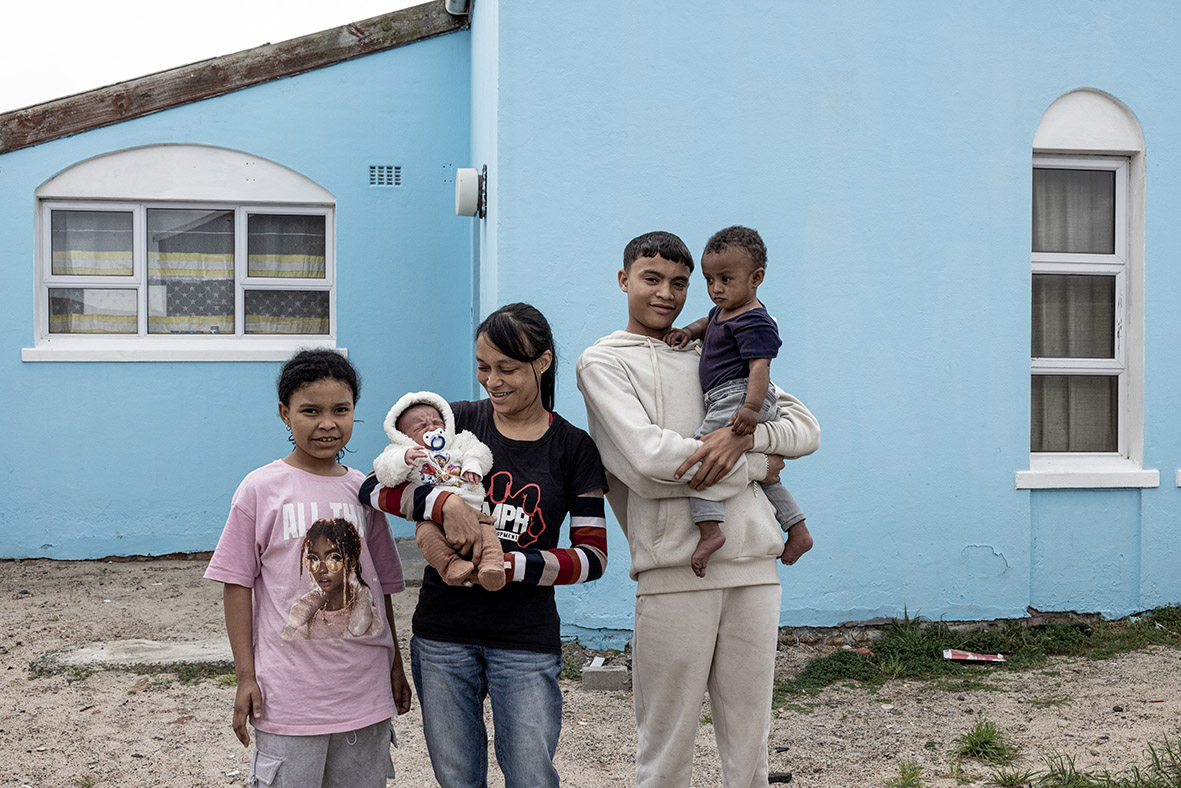
Zaitoon Ragman with her baby Naa-iqah (6 days old) and older children Raeez, Naa-ilah, and Raheez at their home in Mitchell's Plain, South Africa. Zaitoon survived PPH after childbirth. © K Schermbrucker / WHO.
“What makes PPH so dangerous is how unpredictable it can be,” explains one of her doctors, Alexandra St Clair. “Sometimes you only have minutes to act, and it requires the whole team working together to save a life.”
.jpg?sfvrsn=4692ea76_3)
Dr Alexandra St Clair, Medical Officer in Obstetrics and Gynaecology, prepares for theatre at the Mitchells Plain District Hospital, Cape Town, South Africa. Dr Alexdra St Clair regularly treats mothers for Postpartum haemorrage (PPH). © K Schermbrucker / WHO.
Stories like Zaitoon’s underscore the urgent need for stronger systems to prevent, detect and treat PPH. Several millions of women are affected every year, and nearly 45 000 die as a result of excessive bleeding after childbirth, making it one of the world’s leading causes of maternal mortality.
In response, the World Health Organization (WHO), together with the International Federation of Gynecology and Obstetrics (FIGO) and the International Confederation of Midwives (ICM), has released consolidated guidelines for the prevention, diagnosis and treatment of postpartum haemorrhage. For the first time, clinicians are advised to act not only at the traditional threshold of 500 mL of blood loss, but also when threshold of 300 mL of blood loss is reached and accompanied by any abnormal vital signs. This happens more often in women who are anaemic, especially in low-resource countries. To support earlier and more accurate diagnosis, the guidelines recommend objective measurement of blood loss using calibrated drapes.
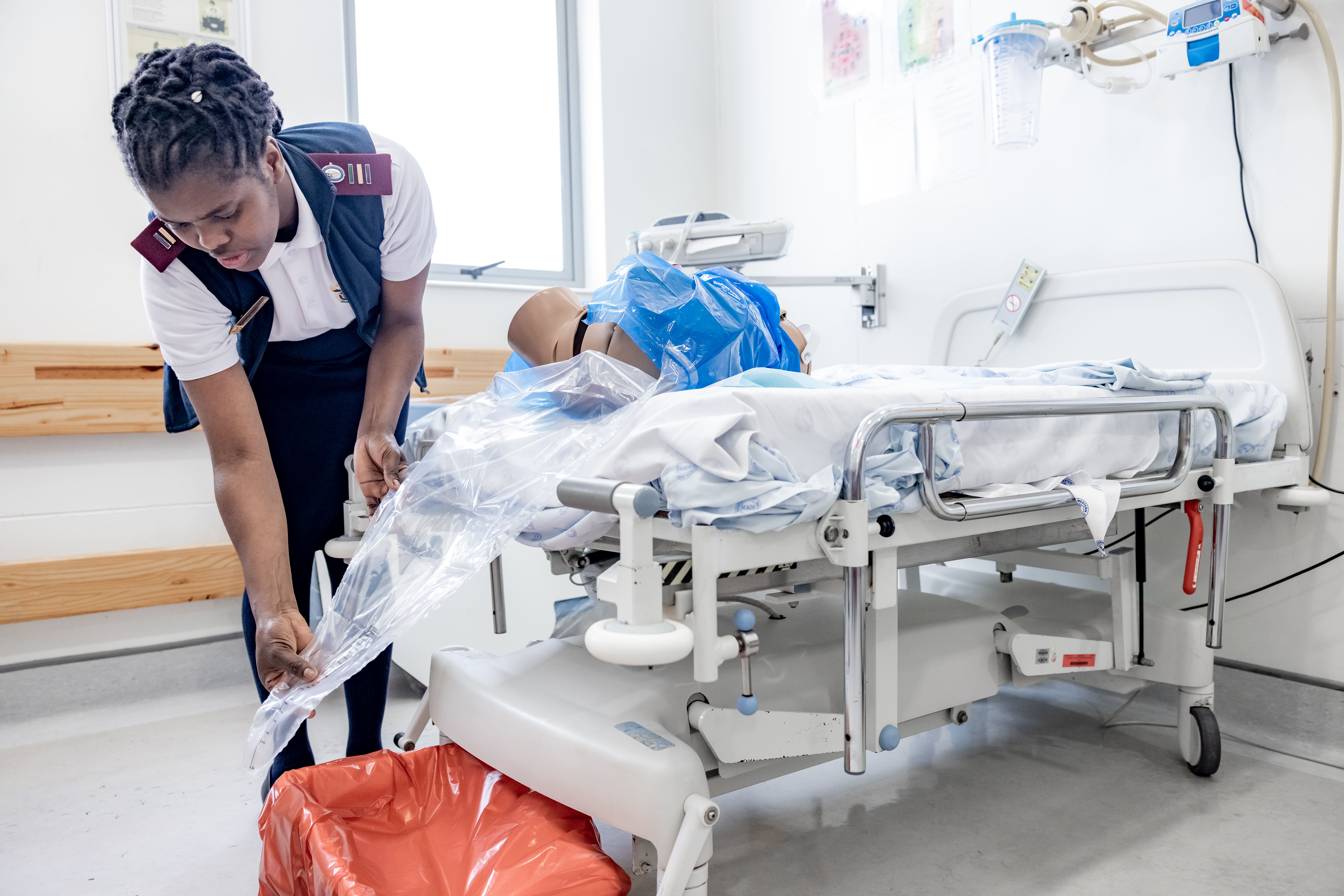
Noxolo Hoga, Advanced Midwife, uses the calibrated drape, a cone-shaped plastic sheet with a measurement pouch, which is used to accurately collect and quantify blood loss after delivery. Mitchells Plain District Hospital, Cape Town, South Africa. © K Schermbrucker / WHO.
The guidelines also include a standardized first-response treatment bundle known as the PPH bundle, or MOTIVE, to be used once the diagnosis of PPH is made. A bundle is composed of steps that are effective in stopping the bleeding and include the massage of the uterus, oxytocic drugs to stimulate contractions, tranexamic acid to reduce bleeding, intravenous fluids, vaginal and genital tract examination, and escalation of care if bleeding persists. Alongside these measures, the recommendations emphasize effective prevention, including daily iron and folate during pregnancy to reduce anaemia or intravenous iron when oral iron is not tolerated or speed is needed to correct iron deficiency anaemia, the use of quality-assured injectable uterotonics such as oxytocin or heat-stable carbetocin (where cold chain cannot be maintained) during the third stage of labour, and discouraging unsafe practices such as routine episiotomy.
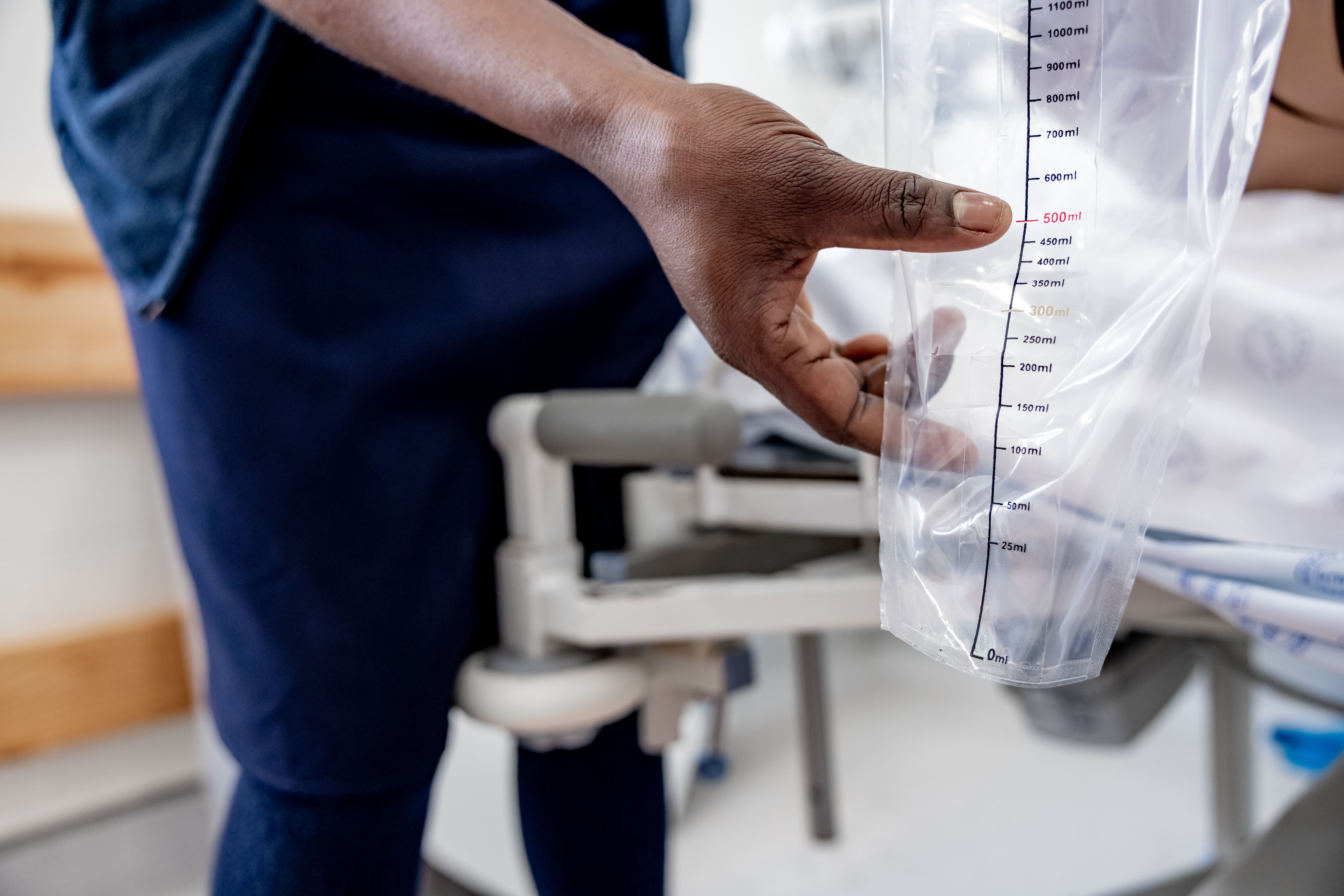
Noxolo Hoga, Advanced Midwife, uses the calibrated drape, a cone-shaped plastic sheet with a measurement pouch, which is used to accurately collect and quantify blood loss after delivery. The drape is placed under the woman’s buttocks, collecting blood and clots. If bleeding is determined to be excessive, the woman will be given oxytocin, tranexamic acid, and intravenous fluids to treat PPH, while the clinical team decides if further intervention is needed. Mitchells Plain District Hospital, Cape Town, South Africa. © K Schermbrucker / WHO.
By unifying previously fragmented recommendations into a single resource, it empowers governments, health systems and professional associations to accelerate action at national level. The guidelines contain evidence-based recommendations and are designed not just for policy, but for practice, ensuring health workers everywhere have access to clear, consistent direction.
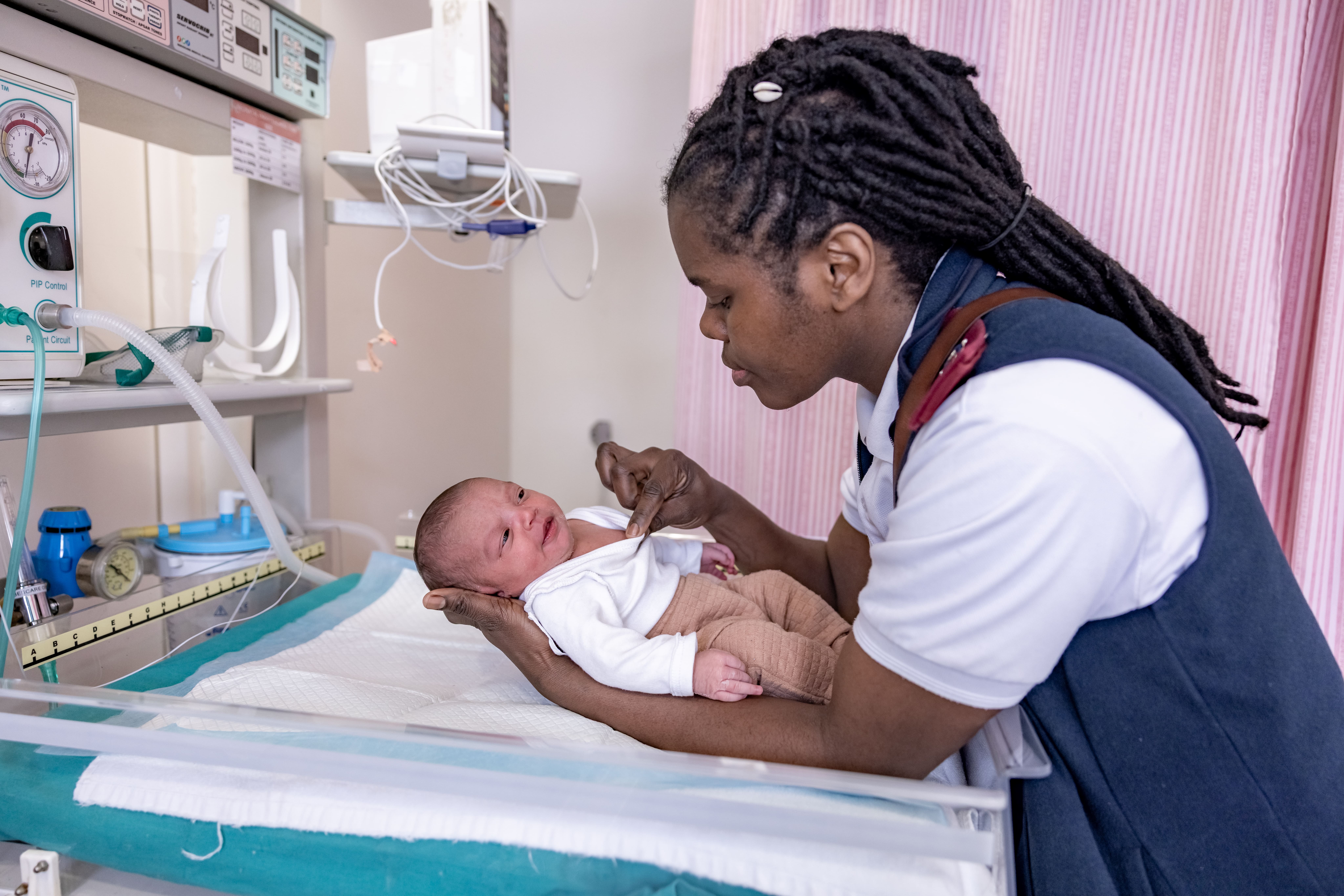
Noxolo Hoga, Advanced Midwife, examines baby Naa-iqah Ragman in the labour ward at the Mitchells Plain District Hospital, Cape Town South Africa. Noxolo regularly treats mothers for Postpartum haemorrage (PPH). © K Schermbrucker / WHO.
To help put the guidelines into action, WHO and partners have developed the Bleeding after Birth package, a suite of training resources for frontline health workers. This includes action plans that guide health workers step by step during emergencies, a provider guide to support clinical practice, and a facilitator flipchart for training sessions and simulations. These tools aim to ensure that the new recommendations become part of routine practice in health facilities worldwide.
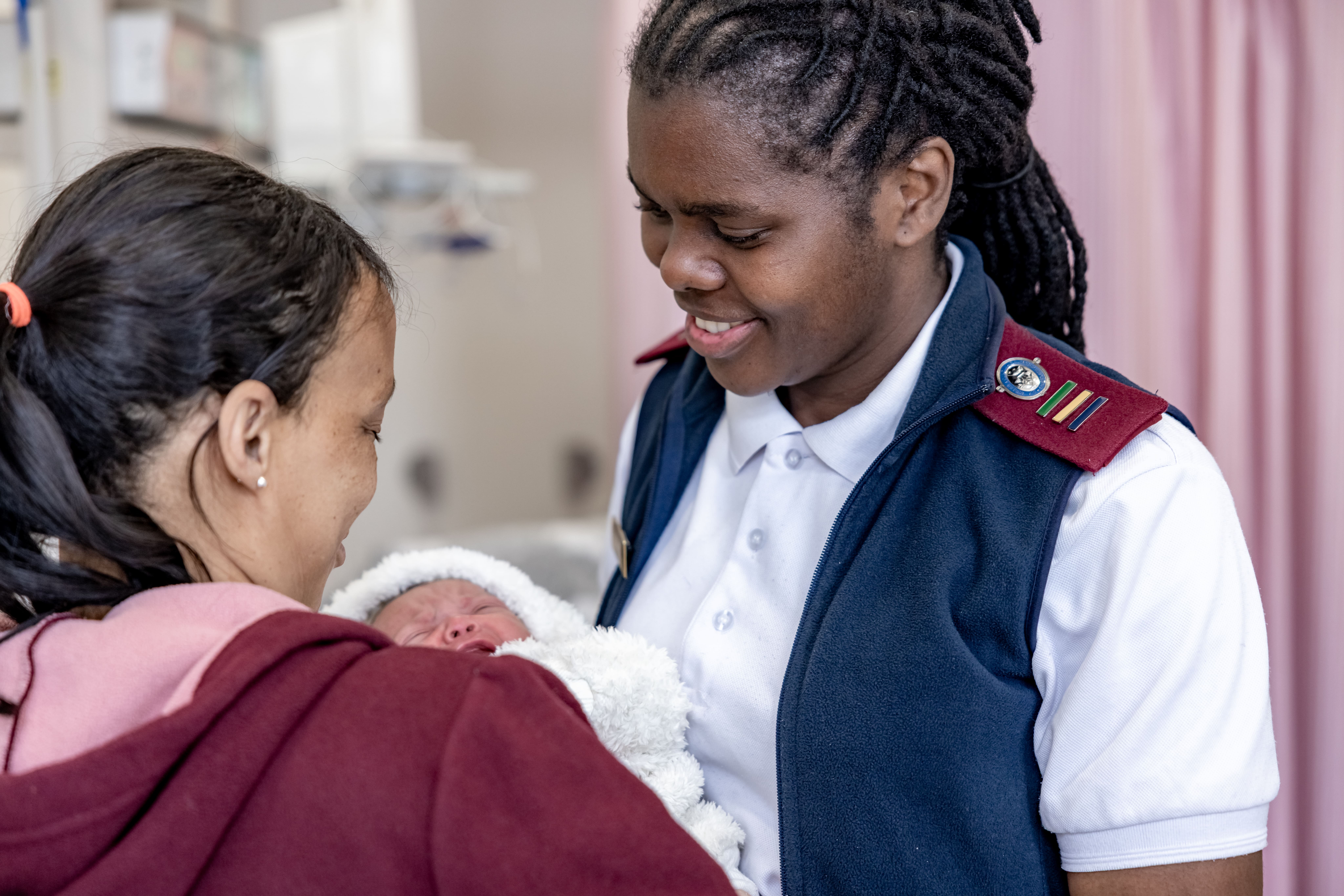
Noxolo Hoga Advanced Midwife, examines Zaitoon Ragman and her baby, Naa-iqah (6 days old,) in the labour ward at the Mitchells Plain District Hospital, Cape Town, South Africa. © K Schermbrucker / WHO.
For Zaitoon and many other women around the world, the guidelines are not abstract. They are the reason she is alive to raise her four children. “If it wasn’t for the doctors and midwives, I would not be here,” she says. Her story is a reminder that behind every statistic is a mother, a family and a future saved.
